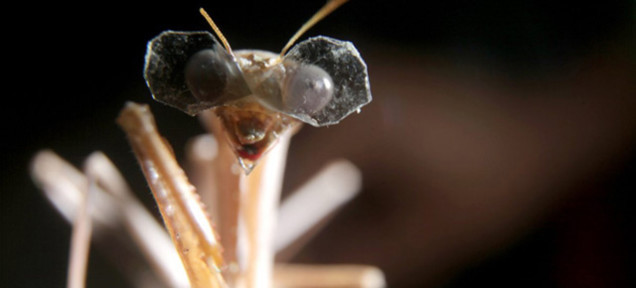
In 1983, Samuel Rossel determined that mantises (of which the praying variety is the most famous) possess 3D vision. Piggybacking on this discovery, scientists at Newcastle University are researching how to gain a better understanding of 3D vision by taking a closer look at mantises’ vision. The team is attaching 3D glasses to mantises’ eyes to see if they will be fooled by the presence of 3D images. The researchers will attempt to compare mantises’ stereotypic vision to that of the human world and how 3D recognition has developed across various species. This study will allow future technologies, such as 3D vision in robots and computer vision programs, to be enabled.
Team leader Dr. Jenny Read from Newcastle University’s Institute of Neuroscience has been given a $1,680,700 Research Leadership Award by Leverhulme Trust to fund this project that will focus on analyzing the mechanics of 3D vision in mantises. It will be interesting to view the conclusions drawn from this project and how these crucial pieces of knowledge can be applied to future scientific and industrial projects.
In a press release on the University’s website, Read stated that “despite their minute brains, mantises are sophisticated visual hunters which can capture prey with terrifying efficiency. We can learn a lot by studying how they perceive the world.” Observing this system of vision can open various portals in terms of developing easy algorithms for programming robots’ 3D vision capabilities.
The team of experts will look at the response of virtual 3D stimuli, like moving objects, on the mantis’ field of vision. The 3D glasses are affixed to the mantis with beeswax while the insect is exposed to moving images on computer screens. The insects are tricked into underestimating the depth of objects and scenarios, just like what happens when humans watch 3D films. The mantises’ responses and behavioral patterns are calculated and electrophysiological recordings will be noted and applied when modeling neural algorithms in the future.
Story via Newcastle University
Advertisement
Learn more about Electronic Products Digital





